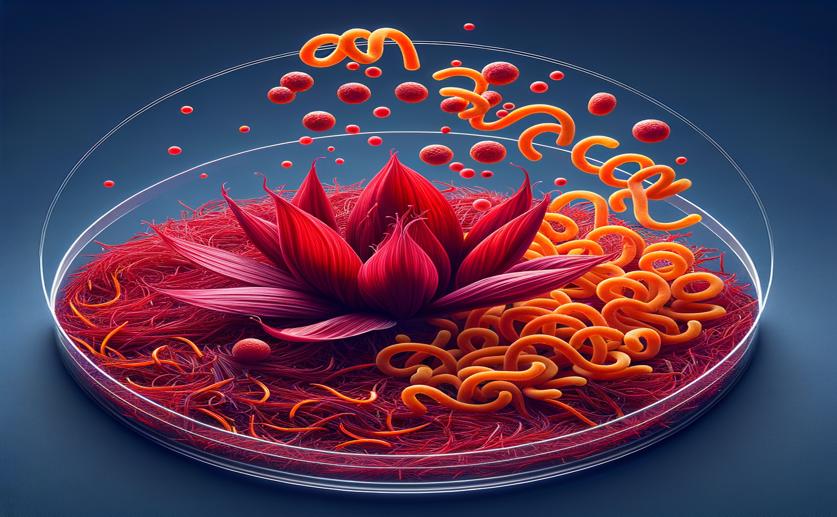
How Saffron's Key Ingredient Safranal Interacts with Digestive Enzyme Trypsin
Jim Crocker
20th June, 2024

Image Source: Natural Science News, 2024
Key Findings
- Researchers from King Saud University studied how safranal, a component of saffron, interacts with trypsin, a digestive enzyme
- Safranal binds to trypsin in a 1:1 ratio, with the binding strength increasing at higher temperatures
- This binding causes trypsin to partially unfold and become more hydrophobic, altering its structure and function
References
Main Study
1) Interaction of major saffron constituent safranal with trypsin: An experimental and computational investigation.
Published 17th June, 2024
https://doi.org/10.1016/j.ijbiomac.2024.133231
Related Studies
2) The role of Safranal and saffron stigma extracts in oxidative stress, diseases and photoaging: A systematic review.
3) Anxiolytic and hypnotic effect of Crocus sativus aqueous extract and its constituents, crocin and safranal, in mice.
4) Protective effect of safranal on pentylenetetrazol-induced seizures in the rat: involvement of GABAergic and opioids systems.
Journal: Phytomedicine : international journal of phytotherapy and phytopharmacology, Issue: Vol 14, Issue 4, Apr 2007



 25th March, 2024 | Jenn Hoskins
25th March, 2024 | Jenn Hoskins